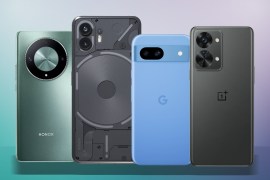Bowers & Wilkins Zeppelin Pro Edition review: an icon refined
Subtle tuning upgrades make all the difference
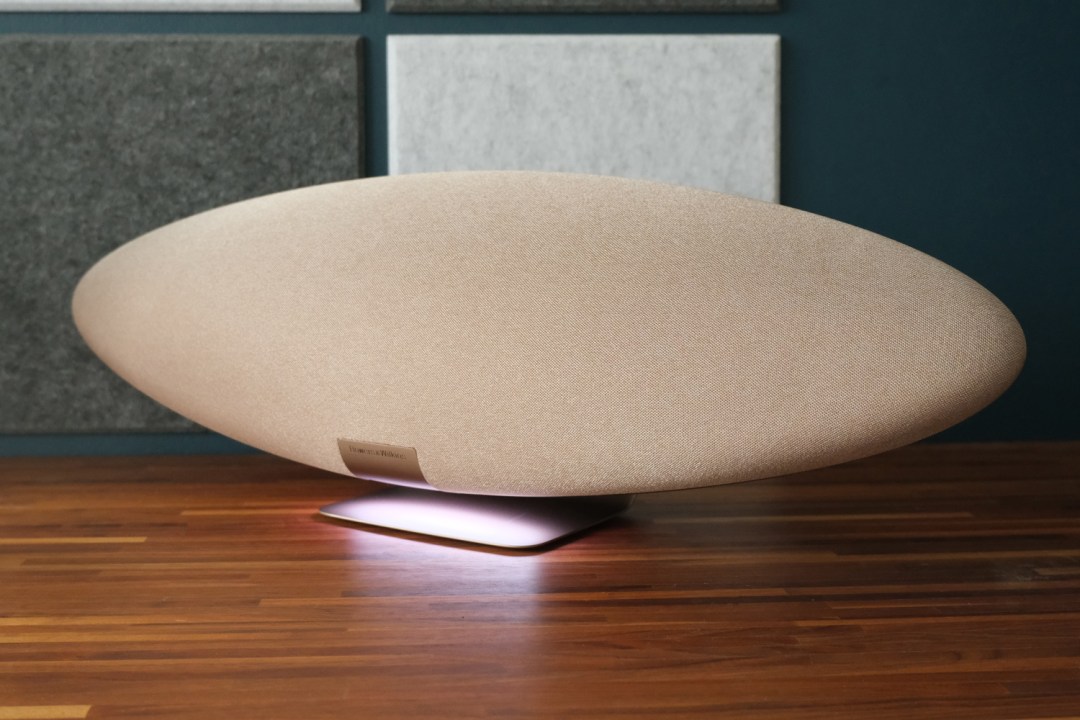
Stuff Verdict
Takes everything that made the last Zeppelin such a superb streaming speaker and elevates the listening experience – if only slightly. The Pro Edition is the best Zeppelin to date.
Pros
- Captures even more of that signature Bowers sound
- Unmistakeable design looks classy from all angles
- Streamlined smartphone control app
Cons
- Subtle audio tweaks may be lost on casual listeners
- No voice control – if you were among the few that used it on the last model
Introduction
If the Zeppelin was a musician, it’d have earned a place in the rock and roll hall of fame several times over by this point. Bowers & Wilkins’ seminal wireless speaker has reinvented itself a few times since it debuted as an iPod dock, but has always kept its signature styling intact. This latest version is more a fine tuning, inheriting driver tech from the firm’s loudspeaker line-up and addressing customer feedback about the 2021-vintage iteration.
The Zeppelin Pro Edition remains all-in on wireless streaming, and happily hasn’t seen the price spiral in light of its new internals. A new colour scheme also helps separate it from the regular Zeppelin, and the ambient lighting can be customised for the first time. It lands at $799/£699, putting it up against more traditional-looking premium wireless speakers like the ageing Naim Mu-so Qb 2nd Generation. Are subtle sound gains enough to give it the edge?
How we test Hi-Fi products
Every speaker, amp and Hi-Fi separate reviewed on Stuff is used for a minimum of a week’s worth of daily listening. We use a playlist of test tracks made up of multiple genres to assess sound, and use our years of experience to compare to other models. Manufacturers have no visibility on reviews before they appear online, and we never accept payment to feature products.
Find out more about how we test and rate products.
Design & build: come fly with me
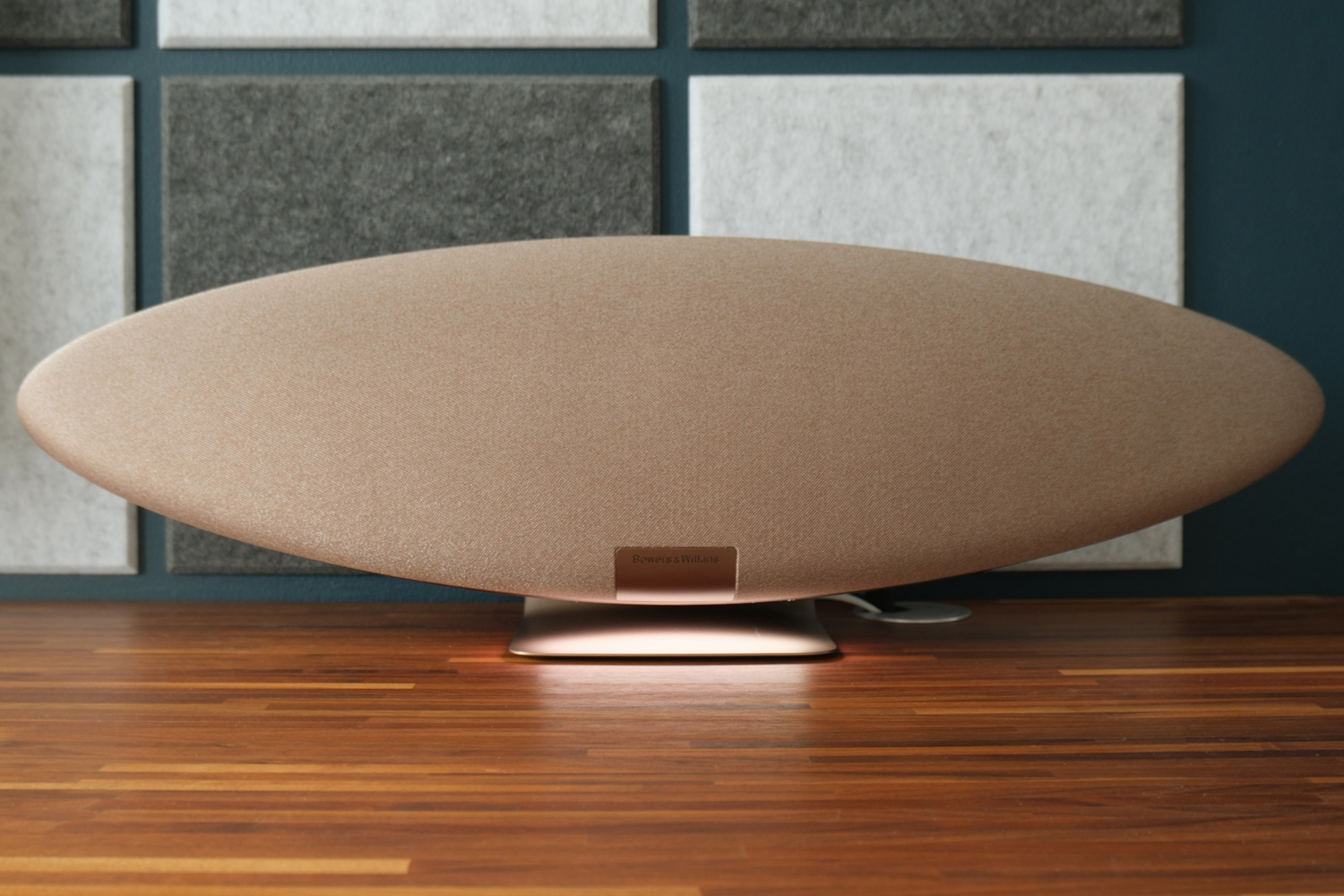
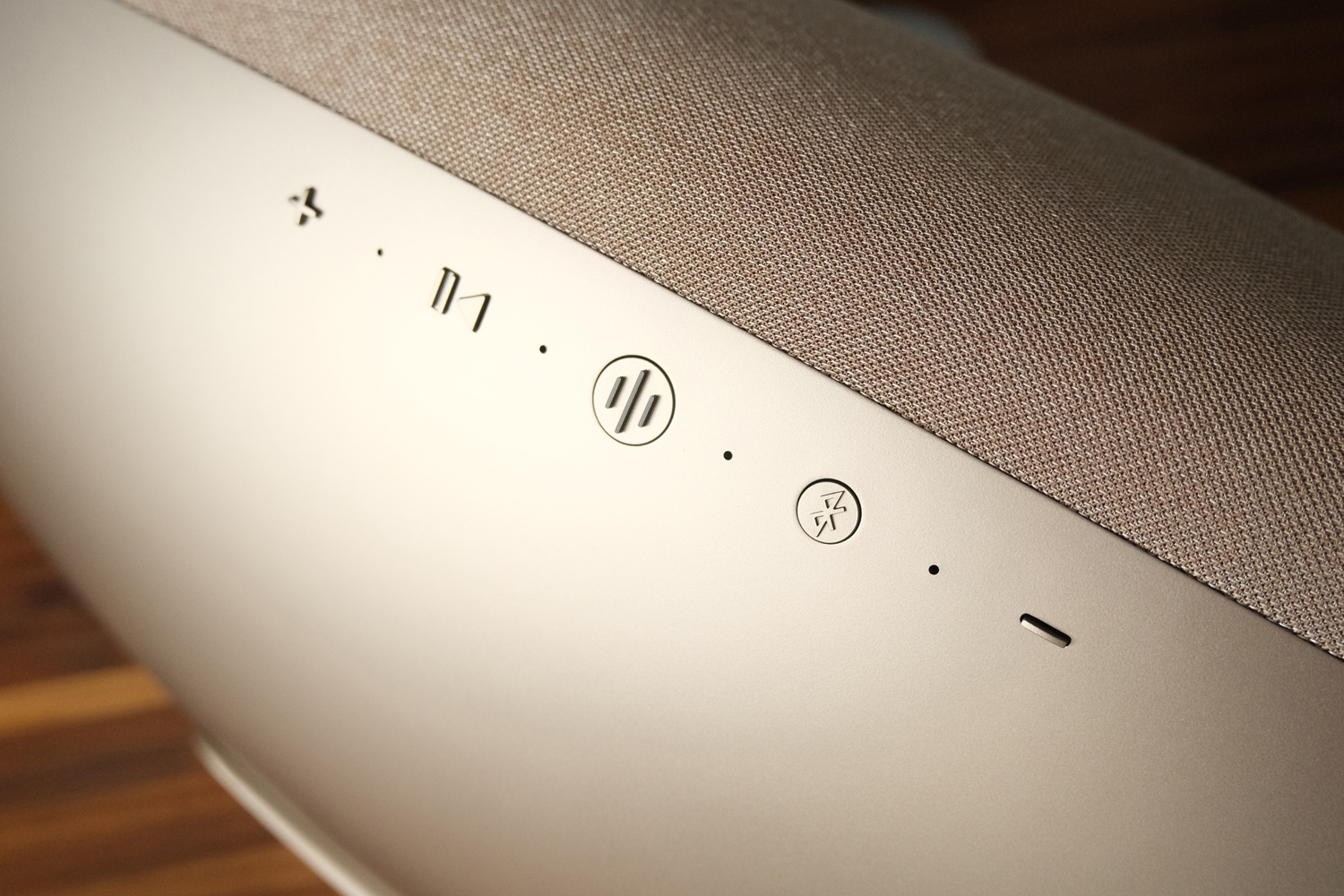
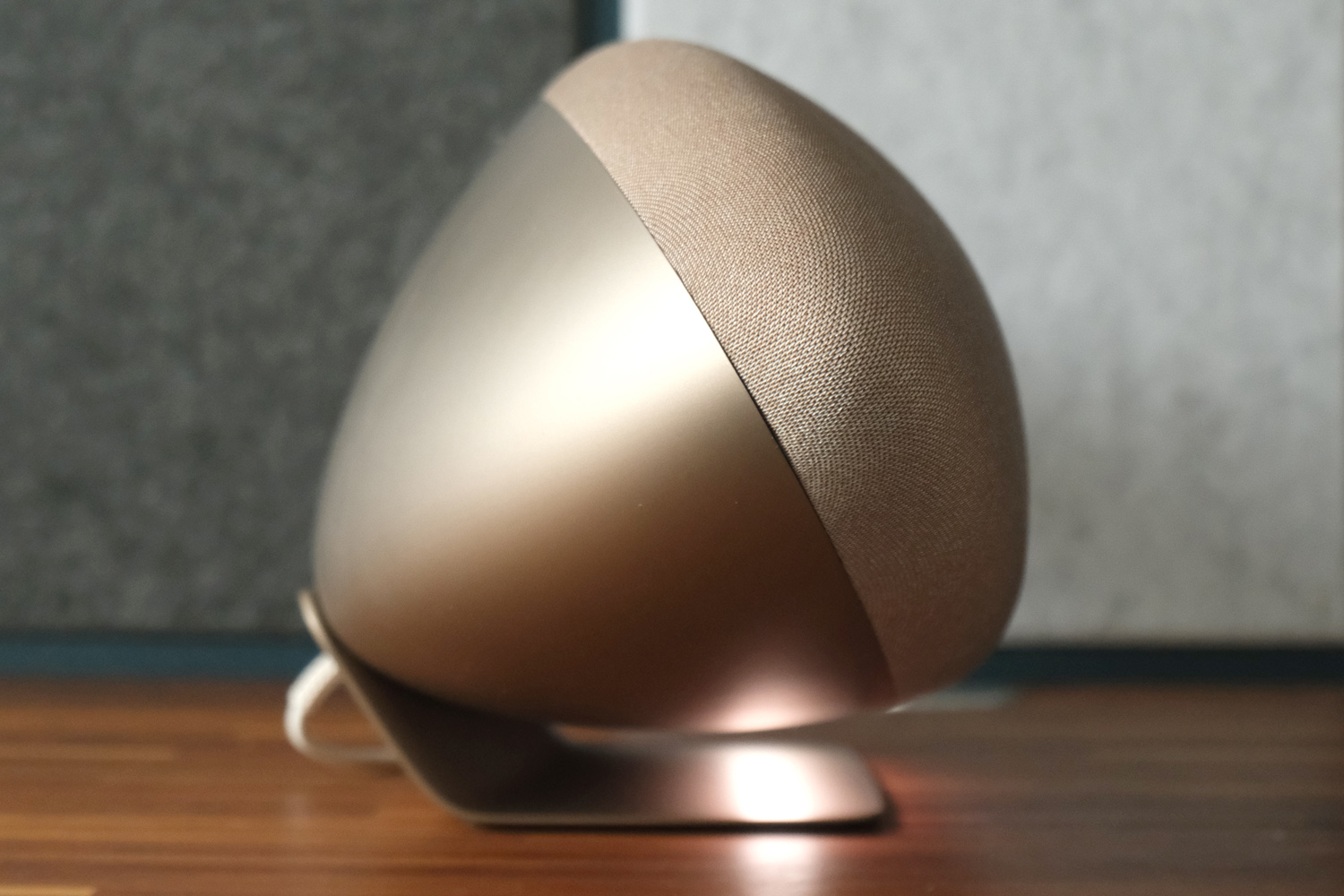
It might not actually be blimp-shaped, but you just need one glimpse at the Zeppelin Pro Edition’s elliptical silhouette to mark it out as a Bowers & Wilkins effort. I’d say there’s more resemblance to a stretched rugby ball, personally. It perches on top of a tough metal pedestal stand, with the entire front face wrapped in acoustic fabric. The rear remains plastic, but the kind that does a convincing impression of metal.
There are two new colour options – solar gold and space grey – with my review unit being the former. I think it’s the one to go for: this is a speaker you want to be noticed, wherever you put it in a room, and the brighter hue stands out that little bit more. A thick rubber case keeps the speaker firmly in place, with zero wobble or rattle when fully cranking the volume.
It’s still a sizeable thing, 650mm wide and 194mm deep, so finding shelf space could be a challenge. The official wall bracket (a £65 optional extra) is an option if you’re so inclined. You’ll only need to find a way to hide the power cable, after all, as Bowers hasn’t included any sort of wired connectivity.
What has been added is the option to change the colour of the subtle ambient mood lighting, which shines downwards from beneath the main unit to give the impression it’s floating in mid-air. There are 15 colours to choose from, including some very un-Bowers-like combinations like hot pink. Unsurprisingly it defaults to a less controversial white, and can be disabled altogether if you’re not a fan.
Features: see the light
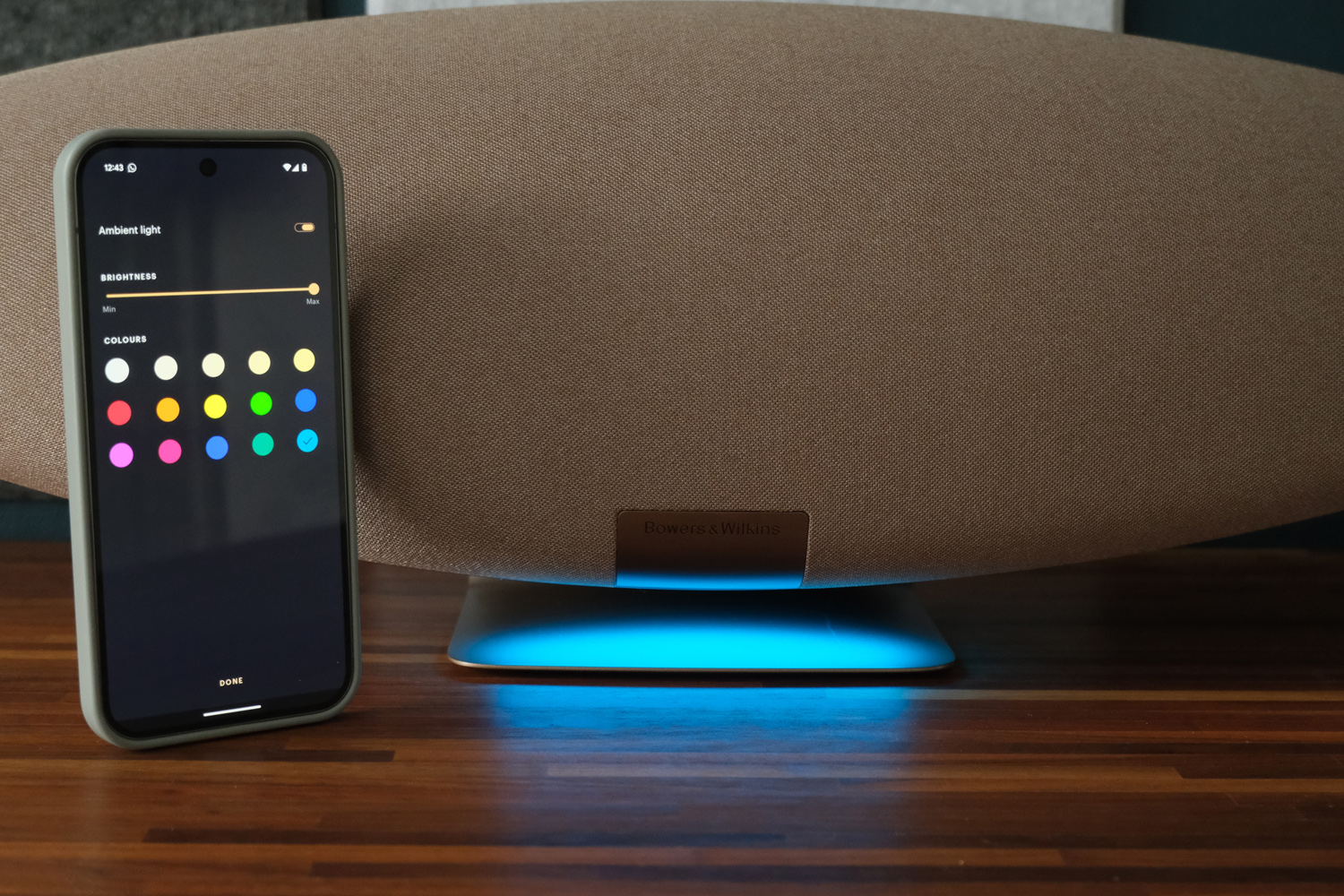
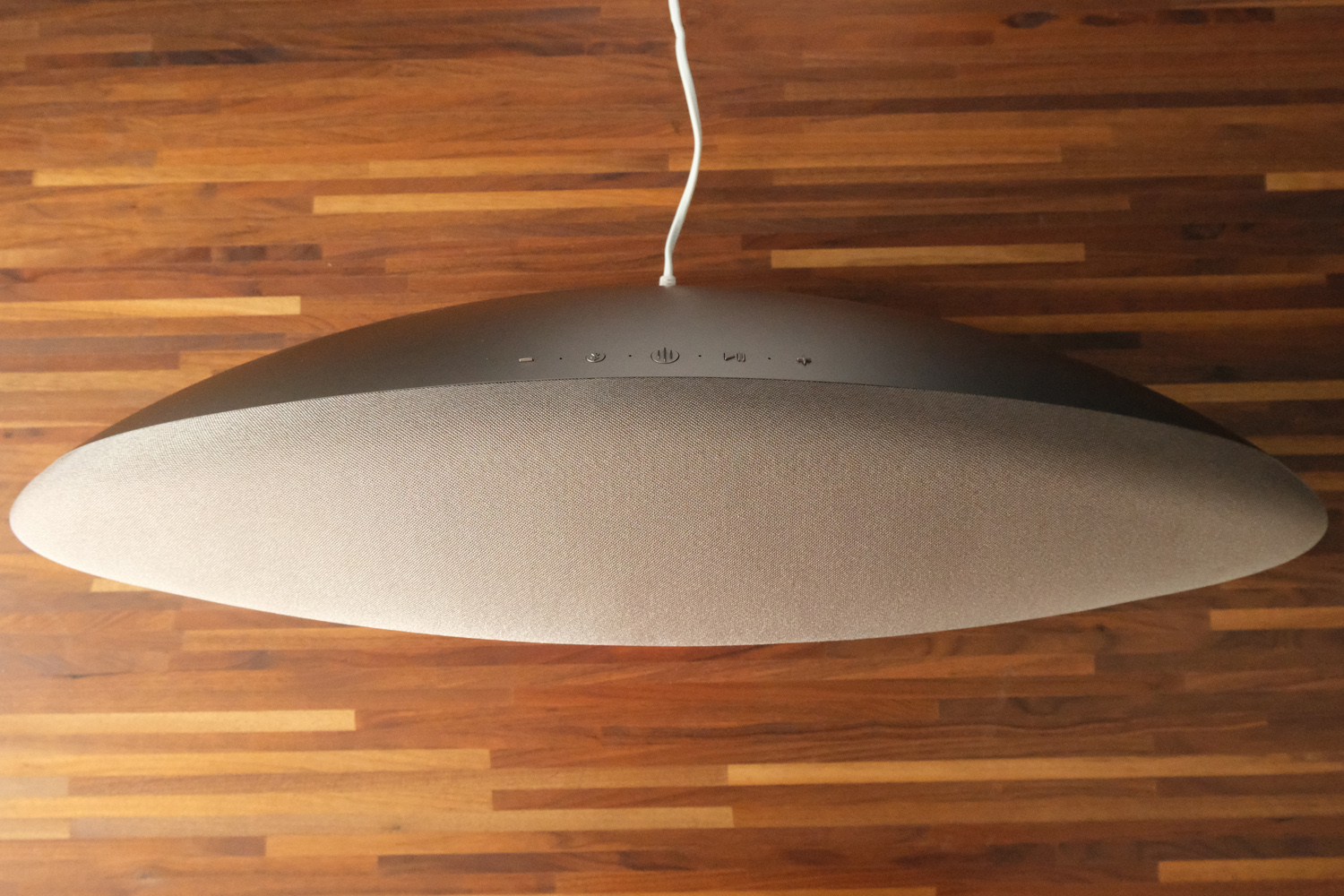
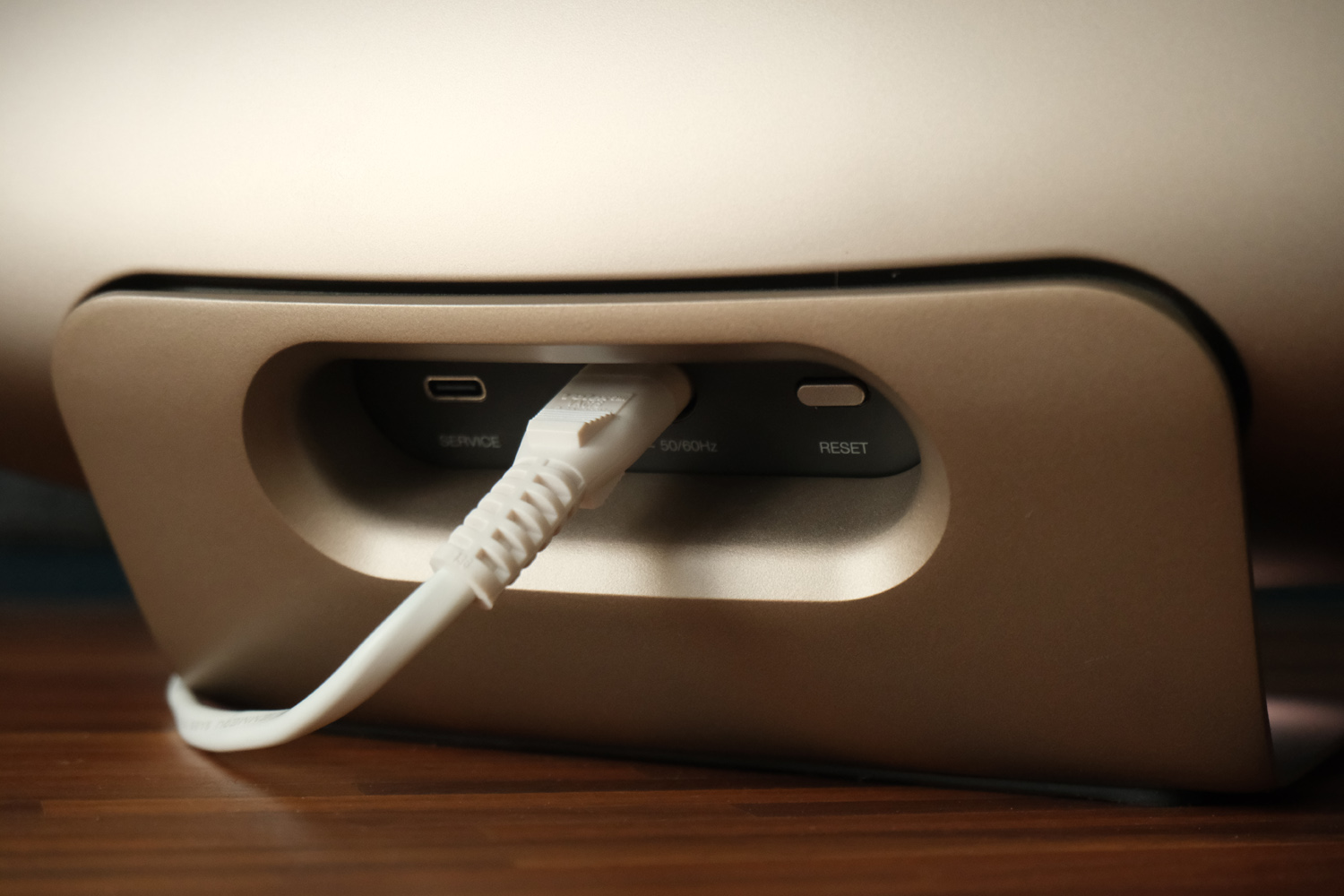
You don’t get any sort of remote control in the box – B&W expects most users will do everything via its companion app – but there are a handful of physical buttons on the back of the unit. One puts the Zeppelin into pairing mode, another activates Bluetooth, and there’s the usual play/pause and volume controls, shaped so you can identify them by touch alone.
Interestingly Bowers has decided to strip out the Alexa voice control functionality seen in the 2021 Zeppelin. Apparently owners just weren’t using it. I can see why, given you couldn’t ask Amazon’s assistant to play tunes from hi-res services like Tidal. The Bowers & Wilkins Music app can sign in to your Tidal and Qobuz accounts for direct playback at the highest possible quality, while Apple AirPlay2 and Spotify Connect also let you stream without having to pair via Bluetooth.
Wireless playback is your only option here, with no inputs at the rear other than a USB-C service port. It’ll accept an Ethernet adapter, for when your Wi-Fi signal can’t quite reach the speaker, but it won’t recognise external storage. Chromecast and DLNA remain off the table, too.
Interface: all about the app
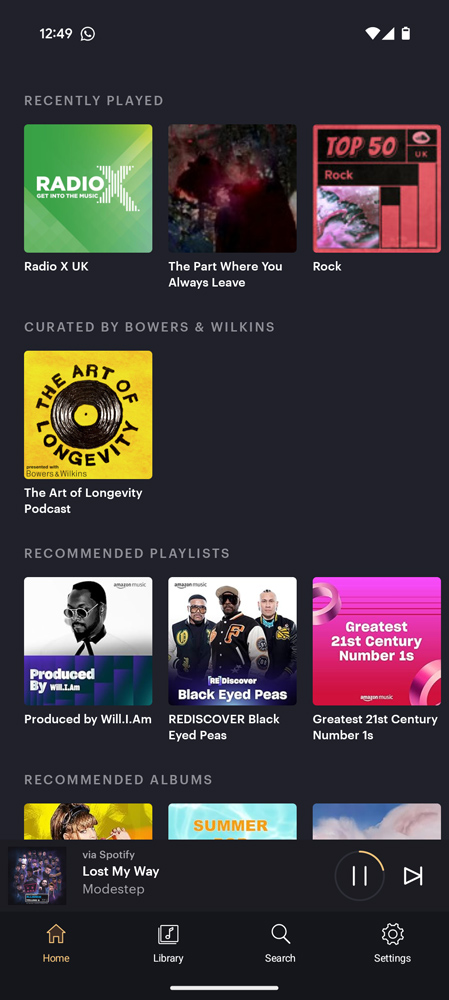
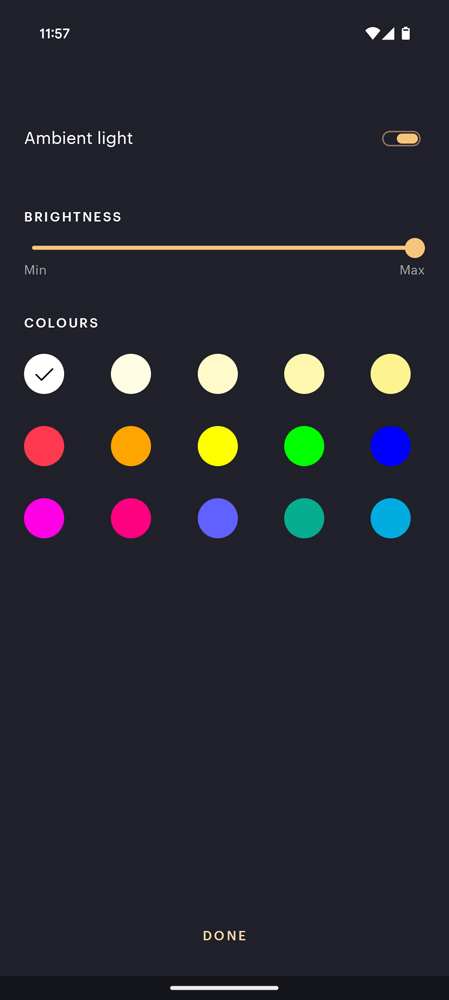
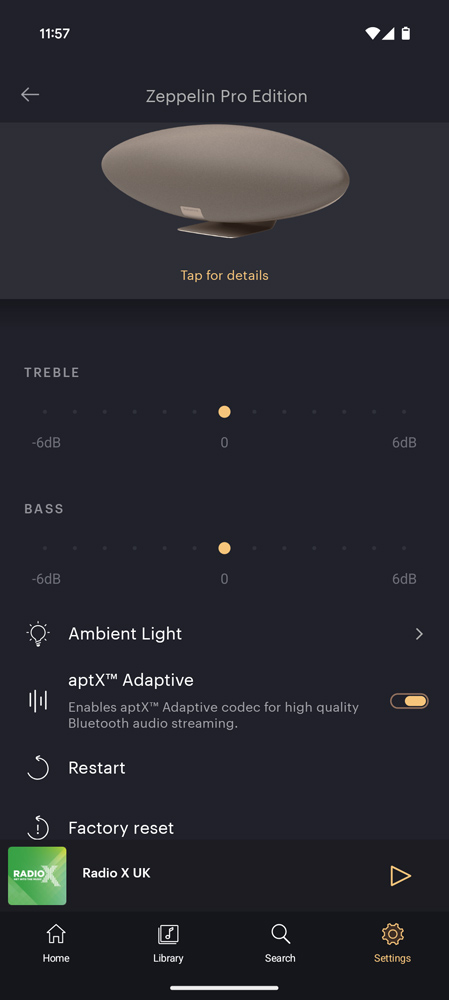
Bowers’ smartphone companion app is way more of a must-download for Zeppelin Pro Edition owners than it is for the firm’s headphone and earphone lines. It’s how you get the speaker connected to your Wi-Fi network, roll it into any multi-room setups, and stream tunes from the major hi-res music services.
You’re prompted to sign into Tidal, Deezer and Qobuz during setup, and can add other services like TuneIn, Soundcloud or LastFM if you’ve got accounts. All your playlists, recently played and favourite tracks are then available in one place, to save you jumping between different apps. Search worked well, bringing up artists quickly and letting me mix and match music, podcasts and live radio.
In all other respects the Zeppelin Pro Edition is very hands-off. The only equaliser settings are Bowers’ traditional bass and treble sliders, which I never really felt the need to adjust from the defaults, and while it gives you the option to disable the aptX Adaptive Bluetooth codec, I’m not sure why you’d bother. Any devices that don’t support it will just step down to a more basic codec.
The ambient light controls let you pick from 15 different colours, rather than give you an infinitely adjustable colour wheel, and a slider for tweaking the brightness. It’s static lighting only, and rightly so – I think RGB rainbows and sound-reacting light shows would’ve been a step too far.
Sound quality: pinpoint precision
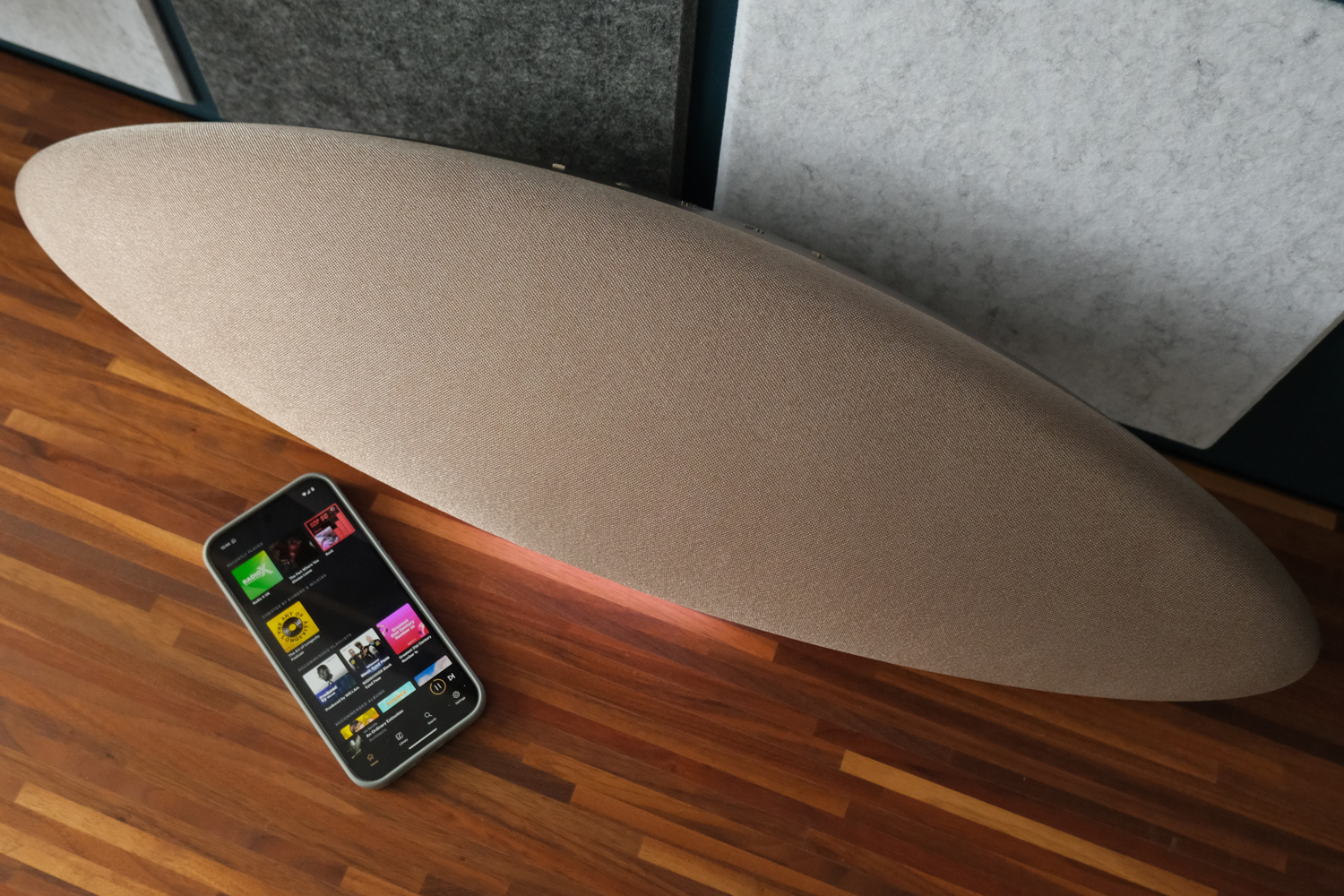
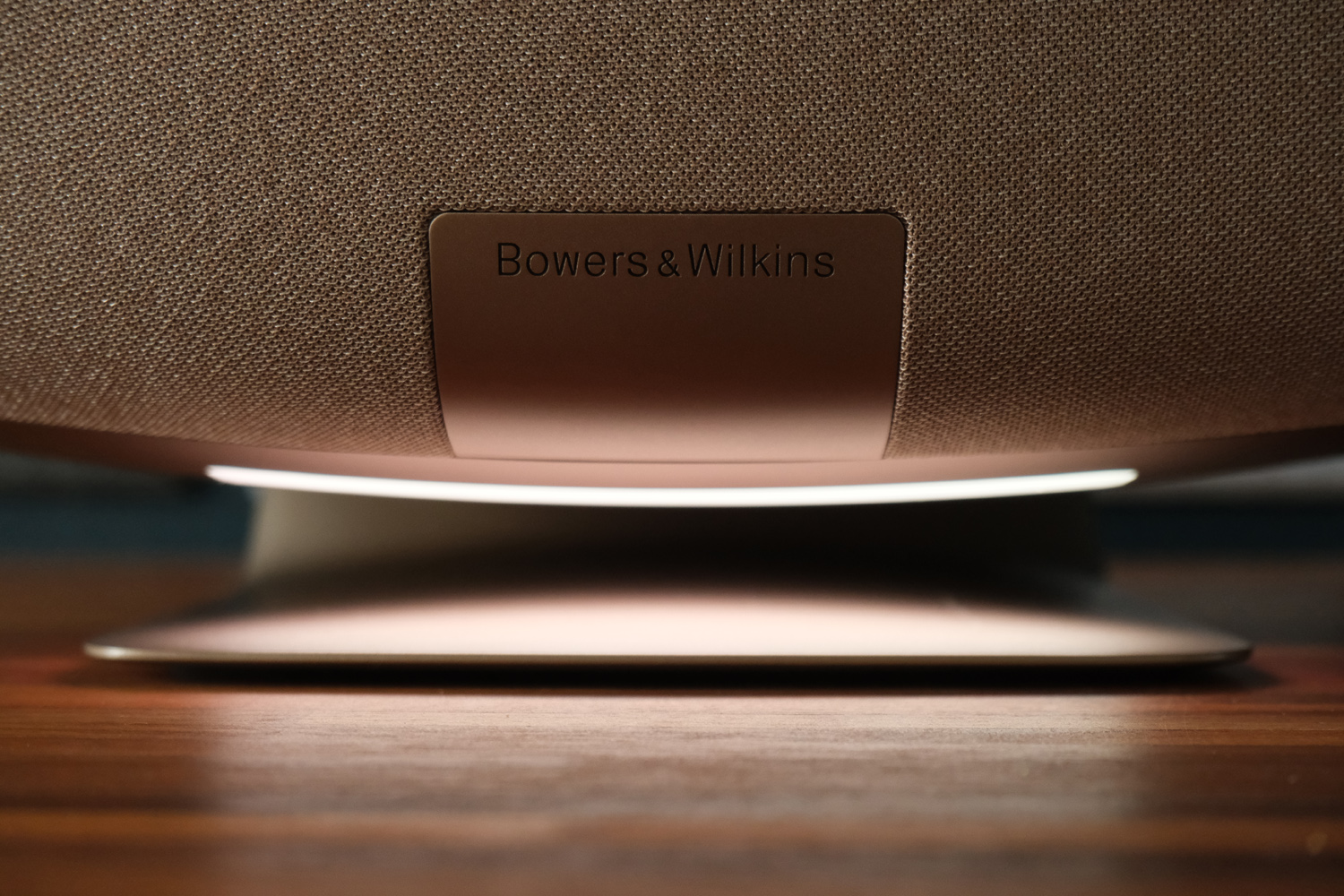
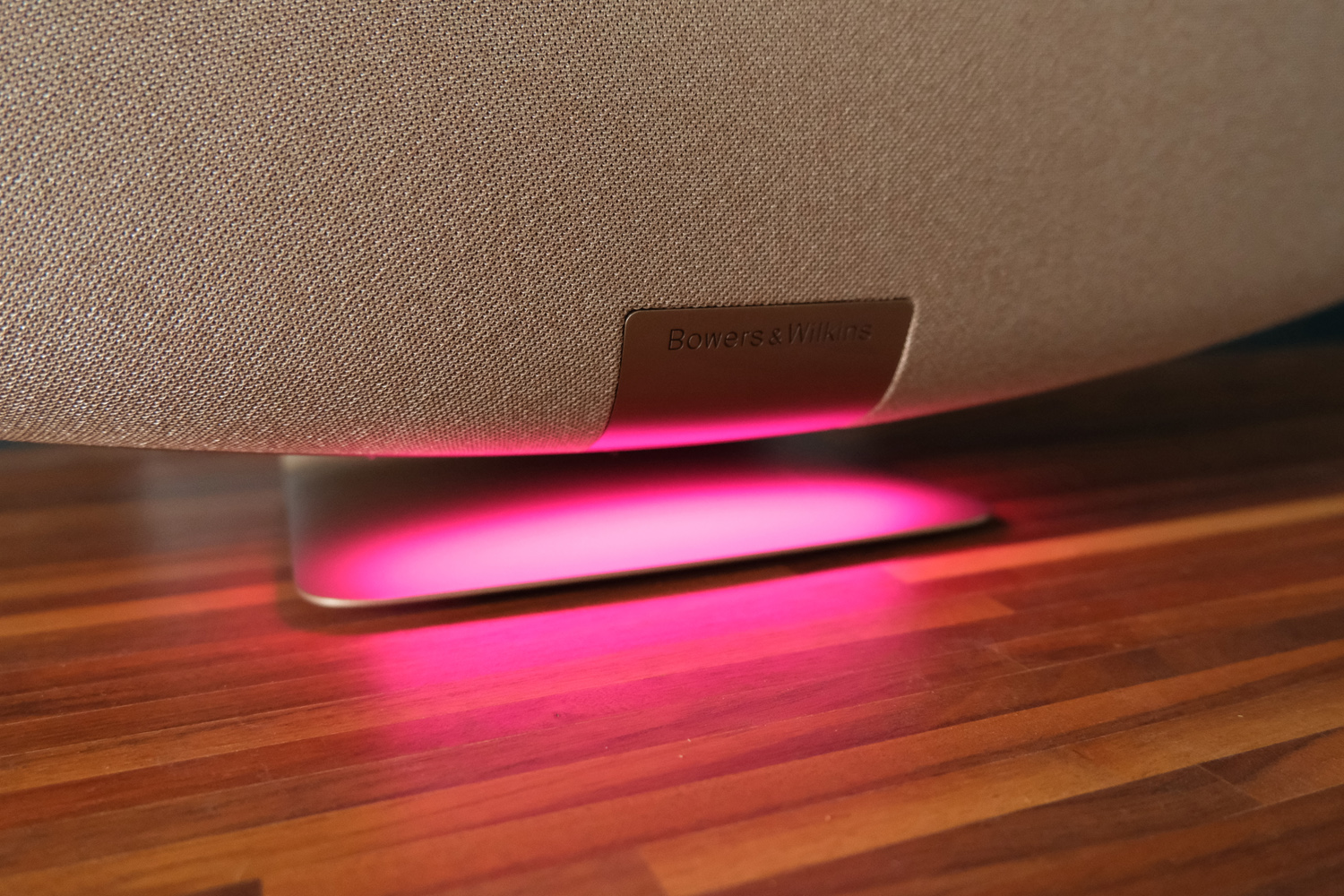
Really, though, it’s what’s inside that separates the Pro Edition from the last Zeppelin. Amplification stays at 240W, but it now uses the same 25mm titanium dome tweeters as Bowers’ storied 600 Series loudspeakers – two of ’em, placed at the far edges of the unit for maximum stereo separation and with fully isolated, vibration-damping enclosures that aim to smooth out high-frequency sounds.
The pair of 90mm mid-range drivers, which use the firm’s Fixed Suspension Transducer (FST) tech, also get uprated cone damping, and a smoother crossover with the single 150mm woofer. The end result should be the same signature Bowers sound – just more of it, with greater high-end nuance and across-the-board richness.
After a week of listening and an A/B test with the old unit, I’m convinced those relatively small changes have made a big difference. There’s a smoothness to the treble roll-off that wasn’t present before, but in a way that doesn’t compromise the clarity and detail of the signal. The melancholy vocal and acoustic guitar on Zach Bryan’s High Road really shine on this system, with a sense of airiness that you don’t expect from a single box.
At the other end of the spectrum, the devastating sub-bass synths on Modestep’s Kiss U had just that little bit of extra space within the mix to make their presence felt. Tonally this feels very in line with B&W’s latest loudspeakers, which will be very well received by fans of the firm.
The overall soundstage hasn’t expanded dramatically, and the differences between generations aren’t night-and-day – but the gains are there, making this a more enjoyable listen no matter the genre. I was equally happy thrashing out angry guitars on Architects’ Whiplash as I was chilling out to downtempo tracks like Billie Eilish’s Everything I Wanted. Instruments aren’t lost among layers of sound, and the frequency range is generally very well controlled, with no hints of boomy bass or sibilant treble at any point.
While there are certainly one-box speakers with more drivers and more powerful amplification, the Zeppelin Pro Edition is by no means lacking. Volume was set to 75% in the demo area of a hands-on event, and was easily enough to fill a room large enough for 20 people. At home, I rarely ventured beyond 50%.
Bowers & Wilkins Zeppelin Pro Edition verdict
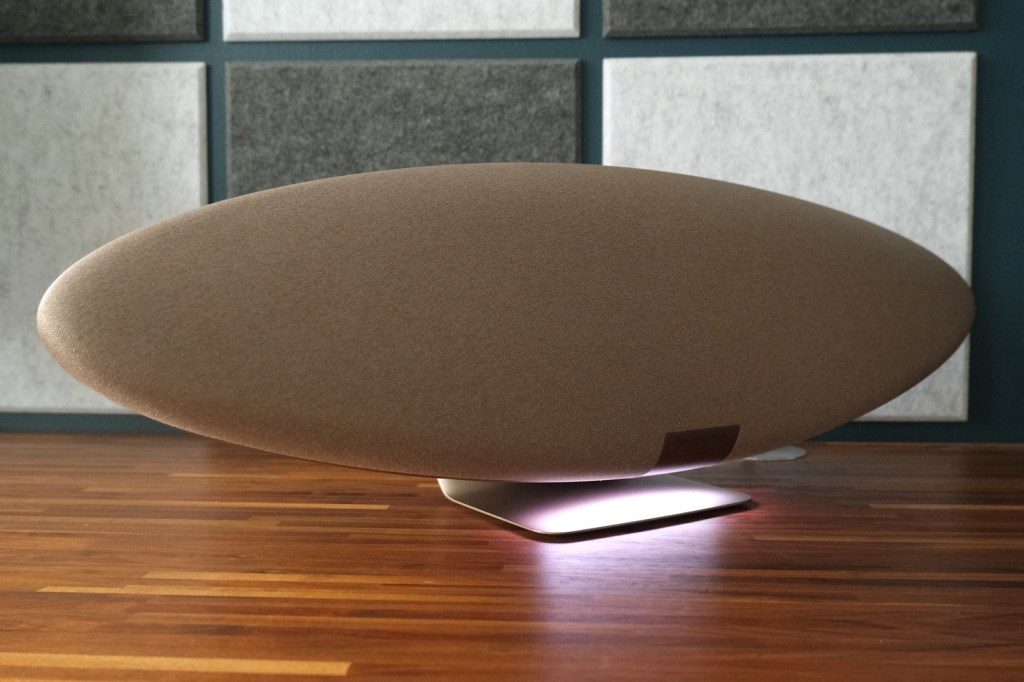
Some small (but very welcome) sonic upgrades and customisable mood lighting don’t radically change the Zeppelin’s character. This is still a brilliantly composed streaming speaker that’ll look outstanding wherever you place it. Only now there’s an extra level of nuance that’s in keeping with Bowers & Wilkins’ recent loudspeaker output.
The companion app makes wireless playback a breeze, no matter your streaming service of choice, so the lack of wired connectivity isn’t a dealbreaker unless you’re after a one-box speaker to play your existing Hi-Fi gear through. Its size might limit where you could put the thing, and losing Alexa voice control might disappoint what few fans of the voice assistant apparently used it on the previous version – but otherwise this is still a wireless speaker that begs to be seen as well as heard.
Stuff Says…
Takes everything that made the last Zeppelin such a superb streaming speaker and elevates the listening experience – if only slightly. The Pro Edition is the best Zeppelin to date.
Pros
Captures even more of that signature Bowers sound
Unmistakeable design looks classy from all angles
Streamlined smartphone control app
Cons
Bowers & Wilkins Zeppelin Pro Edition technical specifications
| Drivers | 2x 25mm tweeter, 2x 90mm midrange drivers, 1x 150mm woofer |
| Amplification | 240W |
| Bluetooth version | Bluetooth 5.0 |
| Codecs supported | SBC, AAC, aptX Adaptive |
| Dimensions | 650x194x210mm, 6.6kg |


